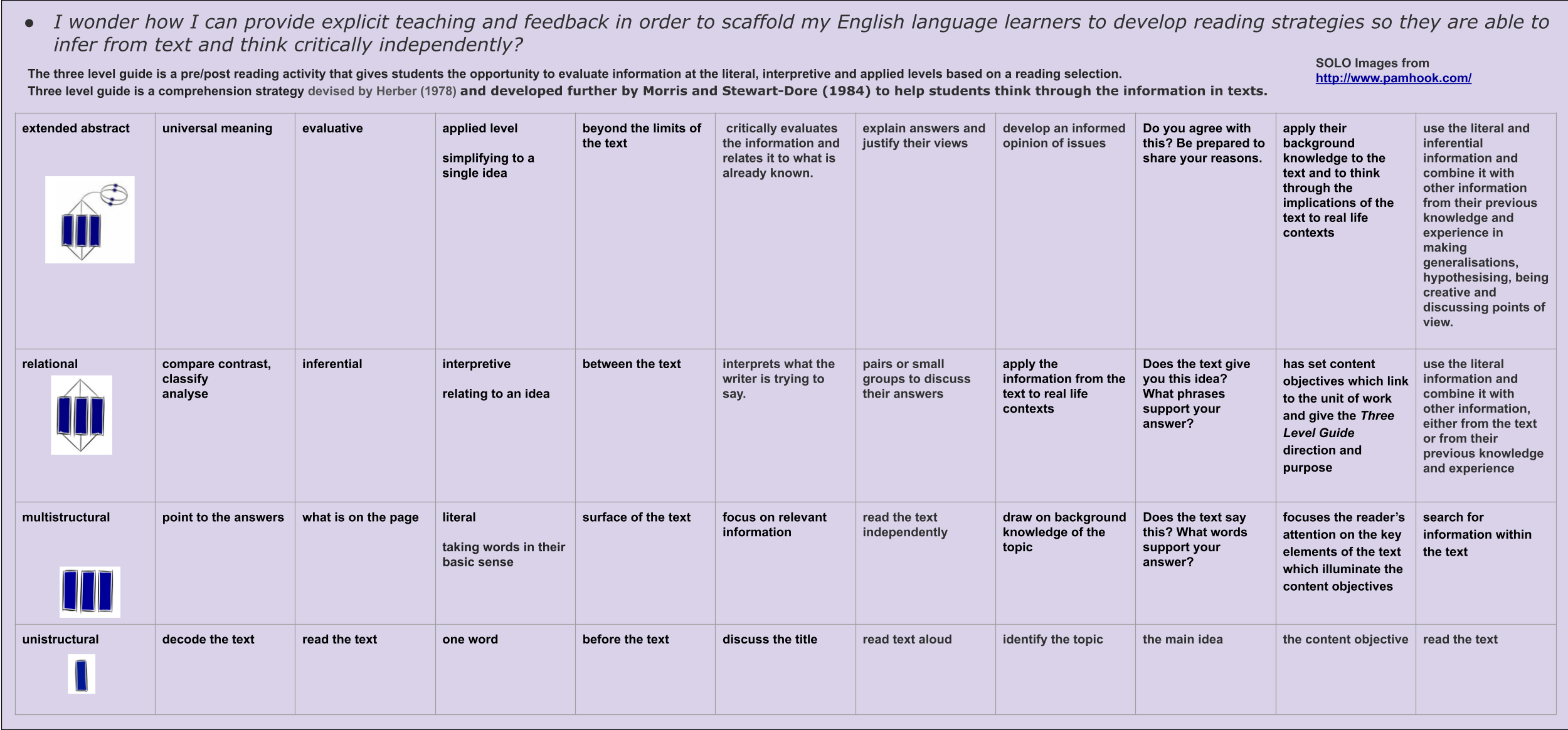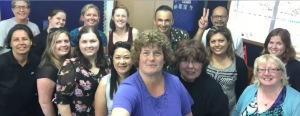 I am always up for a challenge and there is no one like my mentor to give me the push I need to reflect and think through pedagogy.
I am always up for a challenge and there is no one like my mentor to give me the push I need to reflect and think through pedagogy.
Just before the end of the year, I always go through the end of the year class data and identify my English Language Learners who could slide in reading over the summer period. Therefore over the summer period I give them a bag of books with the understanding that I will test them when they come back to school and I expect them to have either maintained their level or moved up one level depending on where they sit on the PM benchmark or using early probe levels.
This week from testing the children after the summer holidays I have several year 4 and 5 children at turquoise level on the PM Benchmark. So we are looking at level 17-18. Those of you who understand our system here in New Zealand will know that this is well below where they are expected to be by year 4 & 5.
But stop!
Have a think about this piece of information. Many of our ELL children came to us two years ago with no English. Therefore against our system that is the progress they have made within two years beginning with no English. If we look at our data and our school standards level 17 and 18 is the benchmark that we aim for for children after two years at school. In addition these children have achieved that benchmark and often began with no English. Therefore are they ‘failing’? Linguistically they have made accelerated progress because they have had to go through the silent, watching period and then learn basic interpersonal communication skills so they can communicate with peers and now they are beginning to gain cognitively applied language proficiency as we start the next process of developing inferential skills in reading. They have caught up over two years what a first language learner achieves after 7 years old. Pretty amazing and always makes me proud.
From the recent testing analysis I have identified that at the text level or the surface level of reading, their decoding skills have improved markedly from last year with a 95+ % result. However the analysis identifies that they could do with help unpacking between the text and beyond the text comprehension strategies. Those comprehension questions continually trip them up at inferential level and stop them moving up to the next reading level.
Those of you who are ESOL teachers will probably know the work of Herber (1978) who devised a comprehension strategy known as ‘The three level guide’. This comprehension strategy is a pre/post reading activity that gives students the opportunity to evaluate information at the literal, interpretive and applied levels based on a reading selection. The comprehension strategy was developed further by Morris and Stewart-Dore (1984) to help students think through the information in texts.
Myself I have trawled our fabulous TKI ESOL site to revisit ESOL comprehension strategies that I learnt about during my Diploma of TESSOL with Sue Gray and team. Furthermore this time I have used my SOLO Taxonomy hat to unpack the information using an information transfer chart. I have created 3 level guides in the past and have used them with great success.. However over the past few years I have been focussing on writing with my English Language Learners as this is another area that continually needs support.
Three level guides means just that 3 levels of comprehension. The comprehension strategy has teacher created statements that occur with searching for information at surface level of text, then has between the text statements that the reader applies the information from the text to real life contexts and explains reasons for this in paired or group discussion and then finally it has beyond the limits of the text statements that the reader critically evaluates the information and relates it to what is already known and justify their answers and their views.
Using SOLO I have identified exactly where each level sits and why but from the writing research I have recently carried out I know that unistructural level in SOLO Taxonomy is also a really important level to go through and this does not feature in three level guides.
The three level guide sits comfortably at multistructural, relational and extended abstract. I now know that is why I have alway found them extremely effective in teaching inferential skills. Therefore as I have unpacked the guides against SOLO I have identified the unistructural part. That is reading or decoding the text. Our ELL are fabulous at that. Decoding is especially noticeable when they are literate in their first language. They fly through the PMs and then when inferential really kicks in at level 17 and 18 they plateau. Often I observe the data and see them sitting at this level for far too long. Several ELL can sit there in class for a year. Personally I believe this is not good enough and we are undervaluing what can be done to push them forward and especially if they are to match their peers after 6 years at school in New Zealand.
Therefore for this first term I will provide explicit teaching and feedback using three level guides in order to scaffold my English language learners to develop reading strategies. I want them to be able to infer from text and think critically independently. By doing this I expect a shift up of one level over this term. Personally I will aim for two levels but I know from past experience if I push too hard then they sit at the next level for three terms.
I have begun the first step by identifying the gap in their learning. I have gathered my data through carrying out reading analysis using running records. I have looked at their historic data and have identified that they have been sitting at level 17-18 for longer than they should have. I have identified that decoding skills are strong so can move straight to multistructural discussion by looking for information in the text. They can retell the story as this is another early indicator of understanding. In SOLO Taxonomy retell is at relational thinking as this demonstrates an understanding of sequencing and progression. For the clarity of this intervention I will look at sequence from a unistructural perspective and think of it as listing progression in the text.
Prestructural
In SOLO before I even begin to teach comprehension I need to identify where the learners are at. One way of doing this is sharing with them their comprehension data or their latest running record. So with my support they can begin to define what comprehension is and list the difference it can make to their reading.
Unistructural
Once done, I begin the Three Level guide strategy. So the students are using one comprehension strategy. The learner can decode the text and retell the text simply by listing the order of events.
Multistructural
At the surface level the learner finds the answer to literal questions on the page and point to them. This is looking at surface level of comprehension. At this level the learner can decode the text, retell what they read and find literal answers on the page by pointing to them.
Relational
At between the text, the learners will be paired into similar levels and they will interpret what the writer is saying by discussing their answers of what is between the text. They will do this by interpreting and applying the information from the text to real life contexts. They could use a variety of relational thinking such as compare and contrast, analysing, part whole thinking, classifying, cause and effect or even analogy.
Extended Abstract
At beyond the text the learner critically evaluates the information and relates it to what is already known.They will explain their answers and justify their views and come up with a single overall statement. I like the I wonder statements and so will begin with these ones.
At the end of each article the children will identify their next steps by using SOLO Taxonomy rubric to reflect on their growing understanding of inferencing.
Using a follow up test I will see the difference that this intervention makes.
I am really lucky at Newmarket School because the teachers who have these children are into their second year of researching and teaching using innovative learning pedagogy. we also have teachers who are enthusiastic at what I achieve with the children and regularly query my methods therefore I have been able to articulate clearly what I do in a visible way.
In addition I have a mentor who gives me clear feedback and regularly prods my thinking so that I am always ready with research and data. If I am not then I say so. By having these regular minor learning discussions I have grown confidently in my pedagogy.
I have also been thinking about February’s #EdBlogNZ challenge of creating a photo of my learning space. I have begun by setting up my SOLO Taxonomy writing wall. If you want a copy of the words then look out for SOLO Taxonomy and English Language Learners available very soon from Educational Resources. Pam and I are very proud of our collaborative book. If you want the SOLO Taxonomy postcards then these are available from http://shop.pamhook.com/.

My ongoing goal is to make learning visible and SOLO Taxonomy is fabulous for doing this. I usually create ‘messy’ walls because they help me think and reflect on my pedagogy. I will complete my reading wall now that I am really clear on what it looks like.
My challenge to you, ‘How do you make learning visible for your learners?’
For all things SOLO, visit http://www.pamhook.com/
Update: My mentor mentioned I had omitted prestructural in my thinking. Therefore I have added that. (that is me thinking I do not really need to be adding that.) However presrtuctural is also an important part of thinking.
References
Herber, H. (1978). Teaching Reading in the Content Areas. New Jersey: Prentice Hall.
Hook, P., and Van Schaijik, S. (in press). SOLO Taxonomy and English Language Learners. Making second language learning visible. Essential Resources Educational Publishers Limited. New Zealand.
Morris, A. and Stewart-Dore, N. (1984). Learning to Learn from Text: Effective Reading in Content Areas. New South Wales: Addison-Wesley.












